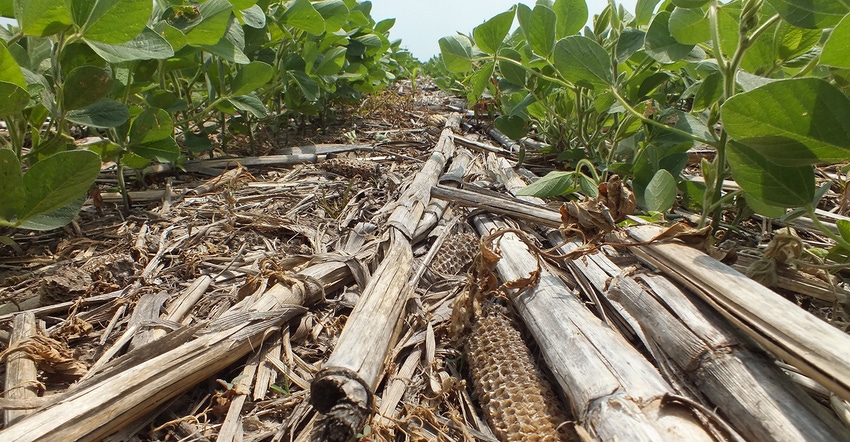
Recently, I heard from a farmer and read in an article that it is important to at least partially bury residue to speed up its decomposition.
I asked Dwayne Beck, South Dakota State University professor of agronomy and manager of the Dakota Lakes Research Farm, Pierre, S.D., “Is that a fact or myth?”
“As with everything you ask me, I have no simple answer,” Beck replied in an email. “It depends on the goals. If the goal is to have the residue converted to carbon dioxide (leaving some residual minerals behind) and disappear in a system that is very low in biological activity, this approach is correct. This is what has been done to soils in agriculture for a long time. It is what leads to loss of organic matter. It is similar to burning something. If you want it to burn fast and hot, you chop it into tiny pieces and expose it to lots of oxygen. In the case of bacterial decomposition, you also expose to some moisture. There is little residual material left. It is basically a mining operation designed to enhance nutrient removal.
“The problems with this approach are multiple from a soils and ecosystem standpoint. When the residues are chopped into small pieces (chopping corn heads for instance) there is a tendency for the residue to blow or wash from the field or into piles (or ditches or waterways). It is true that there are some operational efficiencies in small particle size if the goal is to till the soil (as long as the tillage occurs before things move). Tillage (shallow or deep) increases sediment movement, reduces infiltration rates (as compared to long-term no-till), and leads to loss of organic matter because it adds oxygen and chops soil particles exposing soil carbon to decomposition also.
"Yes, reducing the size of the residue and putting it in a position where there are soil organisms and moisture will speed the process. When it is done in the manner described, nutrients released in this process are very vulnerable to loss by leaching, runoff, or denitrification and consequently pose more potential concern for ecosystem degradation. All of the carbon that has been converted to carbon dioxide is lost because no growing plants are present to capture it. Carbon is a nutrient (the one taken up in largest quantities) for plants. The exception occurs when residue is completely covered (moldboard plow) in a manner that excludes oxygen. This material can last multiple years in a buried layer.
“If we look at what happens in natural systems including everything from mixed-grass prairies to rain forests we find processes that might serve as a guide. The residue remains pretty much intact until it is covered by a subsequent year’s canopy. When the canopy develops, the humidity increases and sunlight intensity decreases. This favors biological activity that leads to residue cycling mediated by larger soil organisms and fungi. Nutrients are released in this process and become available for use as plant growth reaches its maximum. This includes the release of carbon dioxide that can immediately be used by the growing plants. This means that the nutrients are not as susceptible to losses by leaching, runoff, and denitrification. In natural systems, animals (large and small) play a role in the system by modifying the residue size and quality, by changing its position (trampling grass or knocking down a tree or burying manure or pulling residue into a burrow), or by adding biology to the system. The key is that full canopy conditions favor residue cycling.
“In cropping systems, cover crops can be used to enhance residue cycling by providing canopy conditions (high humidity) when they would not be present. For instance, seeding cover crops following wheat harvest in the summer provides a canopy over the wheat residue that enhances its degradation. Nutrients (including carbon dioxide) are captured by the cover crop and kept in the system to be used by a subsequent grain crop or to be harvested by livestock.
“The Cliff Notes version of this is that chopping residue and tilling it into the soil leads to a flash burn and a loss of nutrients, organic matter and soil properties.
“Cycling crop residues can be better accomplished through the use of no-till, diverse rotations, cover-crops, and/or livestock integration. This will increase beneficial soil biology. Residue (soil armor) is your friend. It greatly increases the amount of soil biology available for doing these processes. Our biggest concern is not having enough reside rather than having too much even with our irrigated continuous corn system. Once you have the system working, the residue can cycle very quickly. That would not be true if tillage is used because the biology is destroyed.”
About the Author(s)
You May Also Like






